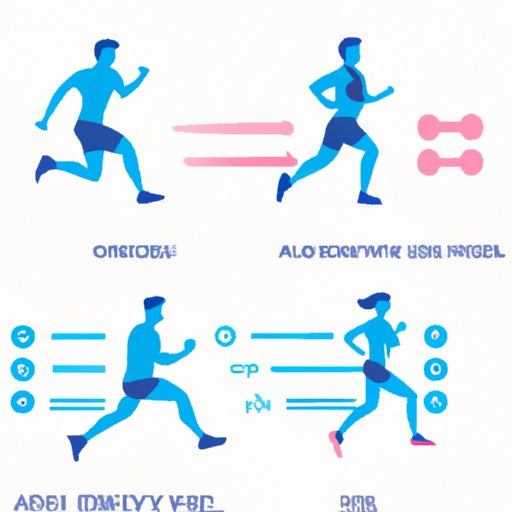Introduction
Running can be a fulfilling and healthy way to stay active, but it can also be frustrating when progress seems slow. Whether you are looking to increase your overall speed or just trying to beat your personal best, improving your running is possible with the proper techniques and training. This article aims to provide helpful advice on how to get faster.
Incorporating High-Intensity Interval Training (HIIT)
High-Intensity Interval Training, or HIIT for short, is a type of workout that alternates short periods of intense exercise with longer periods of rest or recovery. HIIT workouts have been proven to increase both speed and endurance.
HIIT can be incorporated into training plans in various ways. For example, you can try incorporating short bursts of sprinting into your runs, followed by active recovery such as walking or light jogging. Alternatively, you can dedicate specific days to HIIT workouts to supplement your running training.
Focusing on Proper Running Form
Proper running form is key to achieving speed and efficiency in your runs. Common running form mistakes include overstriding, hunching, and not engaging core muscles. To correct these mistakes, beginners can start by focusing on their posture and stride length. Keep your shoulders back and relaxed, your core engaged, and your feet parallel and landing directly underneath your hips.
For those looking to improve their running form, there are specific exercises and drills that can help. Examples include dynamic warm-ups, single-leg exercises, and plyometric drills. By integrating these exercises and drills into your routine, you can effectively improve your running form and ultimately your speed.
Adding Strength Training Exercises
Strength training exercises can significantly improve running speed and endurance. These exercises work to strengthen the muscles used in running. Key muscle groups include the quadriceps, glutes, and calves. Examples of strength training exercises for runners include lunges, squats, and calf raises.
It is crucial to remember that rest and recovery are just as important as exercises. Overtraining can lead to injury and hinder progress. Giving your muscles enough time to recover ensures they are strong and ready for the next workout.
Developing a Consistent Training Program
Consistency is key when it comes to improving running speed. Developing a regular training program that focuses on speed can help you see significant progress. It is advisable to create a plan that includes short-term and long-term goals.
Cross-training can also be an effective way to improve speed. Activities such as cycling, swimming, and yoga can help you develop muscle groups not used in running while also providing a break from its repetitive motions. Additionally, rest days allow for muscle recovery, which is crucial for preventing injury and aiding progress.
Setting SMART Goals
SMART goals are specific, measurable, achievable, relevant, and time-bound. Setting these types of goals can help you track progress and stay focused. Specific goals allow for clear direction, measurable goals provide tangible results, achievable goals help keep you motivated, relevant goals keep your eyes on your desired outcomes, and time-bound goals provide deadlines and structure.
When setting SMART goals for speed, start with small, attainable goals and adjust accordingly. Track progress through journaling or apps and reevaluate as needed.
Conclusion
Improving running speed is possible with the right techniques and training. If you incorporate HIIT workouts, focus on proper running form, add strength training exercises, develop a consistent training program, and set SMART goals, you will see progress in no time.
